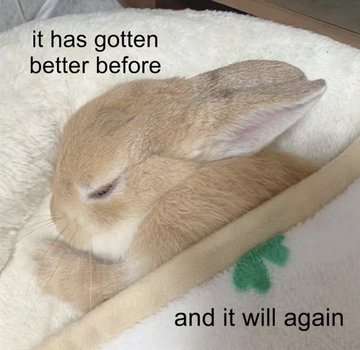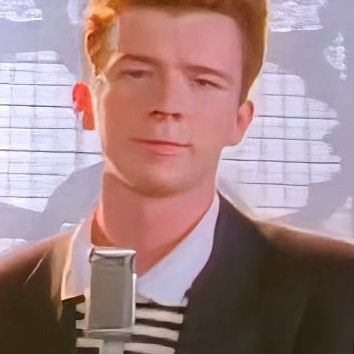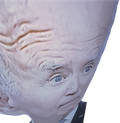

I have recently finished Radhika Desai’s chapters in her book Capitalism, Coronavirus, and War: A Geopolitical Economy where she mentions a brief history of the fall of the Sterling. I’m sure you’ve already read it being the news-guy, so I’d definitely be excited to read a follow up on those chapters or the sources she has cited - especially since finance goes over my head and I’d like for it to make sense.










There have already been good answers here. I thought I’d add my two cents, and also comment on the advice of “don’t think”.
There are many types of meditation, I would say pick one for now and try it daily. Even if it is just 5 minutes or less. Better any meditation daily than none. It’s like practicing an instrument, it’s better to pick it up and play just a little each day than to “save up” all your practicing on the weekend. Meditation is about building new habits, so it must be reinforced daily. Also, it is going to be challenging. So if you want to try different techniques there may be a danger to “shop” around different styles whenever you encounter the inevitable difficulties. On the flip side, it’s fine to try different techniques. A good balance may be to pick a single technique at the beginning of the meditation session and stick with it during that session.
For a beginner, you can do meditation for 5 to ten minutes. Later you can extend it to 30 or more. If you don’t have 5 minutes, do it for any time then. Do it during little moments you find throughout the day. Better some than none.
One of the most commonly described meditations is anapanasati - meditation on the breath. There are other meditations where you don’t focus on anything - shikantaza in Soto Zen for example. I won’t discuss shikantaza, though. I’ve heard one Zen teacher group meditations into either directed attention (anapanasati, etc.) or undirected attention (shikantaza). Even if it is too simple of a classification, it does show that there are different styles.
Most people start with anapanasati, focusing on the breath. The goal is to be mindful of your breathing and to “flex your muscles” of concentration. Sit in a posture, you can be sitting in a chair or sitting lotus, half-lotus, doesn’t matter. Make sure your back is straight and shoulders aligned, like a string is pulling you up from your head.
Now take a breath. Breathe in and out. Try to feel the sensations of that breath. Do you feel a tingling as air passes through your nostrils? Do you feel your abdomen expand and contract? Maybe you feel it in your back? Most recommend focusing on the sensations of the nostril, but focus on what part of the physical sensation of breathing you find easiest and stick with that. If you feel neither then take larger breaths until you feel them and then return to your normal breath. If you feel nothing, then your meditation practice for now will be to keep breathing and build up a noticing of the sensations - but it shouldn’t be too hard. Some people like to visualize the breath, but I’ve been told not to. You can try it though if the above is not clicking with you.
Once you can feel the sensation of your breath (I feel it in my nostrils as I breath in and out) then the goal now is to breath as normal and to center your attention of that area (i.e. the nostrils). You can also count your breaths. As you breathe in and breathe out that’s “one”, etc. up to ten. And start over.
Now what’s going to happen is that you WILL think! A thought will come up, it is very natural. This is where I will push back against others who said “don’t think”.
Thoughts are going to pop up, it’s normal and if you try too hard to force yourself to not think then you are going to set unrealistic expectations on yourself and get discouraged. It’s like pulling on a rose bud to get it to bloom faster. So first, you must not judge yourself for thinking. Don’t force yourself to not think either, as you’ll just get into some meta-type of “thinking about thinking”.
Thoughts will arise like random noise and we shouldn’t judge ourselves for it, but we don’t have to follow our thoughts. We don’t have to indulge in them and let them take us for a ride. This happens all the time and we don’t even realize it 99.99-whatever% of the time.
So we can’t stop thinking (for now) but we can focus on our object of meditation - our breath. Keep breathing and counting. Likely what will happen is that you will notice that for the past couple of breaths you have been forgetting to count, you haven’t noticed the physical feelings of the breath, and you’ve been daydreaming or following some random chain of thoughts. “Uh oh” you may think - well, that’s expected. No judgement. This is a new practice for you. If you notice this has happened then it’s good, actually! You noticed you were lost in thought for a moment. Good! Keep noticing it when it happens and return to your breath. Feel the breath again and start back at one.
This is going to happen over and over. Deciding to focus on the breath, focusing, losing focus, getting lost in thought, noticing, returning to the breath.
It’s very important for you to see the above as normal and actually good if you are a beginner. The goal isn’t to get to 10 counted breaths for now. The goal is to “catch” yourself getting lost in your chain of thoughts, giving yourself a little pat on the back, not making much of a fuss one way or the other, and then getting back to your breath. Don’t think of “10 breaths” as a goal. Ten is arbitrary. It’s better to only get 3 very focused breaths for 10 seconds before losing attention and noticing than to subconsciously count ten breaths and you haven’t noticed your mind has actually been all over the place for the last two minutes singing theme songs and replaying conversations for the past minute. In some ways, the more you “fail” at meditation the better. It means you get more practice in noticing your wandering mind. This also builds concentration, which is good for other forms of meditation.
The goal isn’t to stop the thoughts, the goal is to not “hop on board” with them and let them take you to who knows where. The way to build this strength is to focus attention on your breath. When thoughts come up let them naturally pass like a cloud. Something you’ll notice is that if you don’t feed a thought, it does sorta just go away on its own. Our mind so badly wants to cling to thoughts and let them take us on their trip, but the thought alone actually is very ephemeral and comes and goes pretty easily. Through practice you can start to notice things. You can start to feel less identified with these thoughts that pop up and want to take you away.
Though, trauma may cause powerful thoughts may keep coming up. I’m not trained to give advice with that. And I apologize, I should have said that earlier. If a thought keeps coming up then it’s probably your mind trying to tell you something very important. But I don’t have enough experience to give good advice for something in this context. Also, meditation practice is powerful and can lead you to dark places if you aren’t careful. Some silicon valley types who meditate for “productivity” have found that out. Also, you must always pair meditation with an ethical practice.
As you practice breath meditation and get better. You can try other techniques like labeling. This is where you give a simple label of classification to the thoughts or sensations you feel.
You can also try other objects of meditation instead of the breath. You can even try meditation without any object. Letting thoughts come and pass by without letting the take you along for a ride. Just keep returning to your posture as you do this.